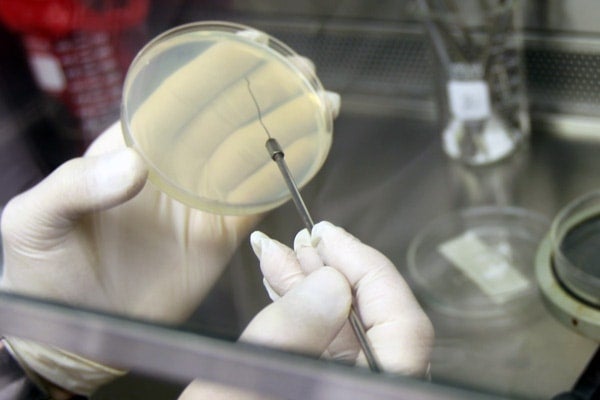
New findings could lead to a test and therapy for kidney failure caused by E. coli
Published: January 10, 2012
Ever since the water supply in Walkerton, Ont., was contaminated by E. coli in 2000, Professor Philip Marsden has been trying to figure out just how a toxin released by that particular strain of the bacteria causes kidney damage in children.
Now Marsden and his team at the University of Toronto and St. Michael’s Hospital have made new discoveries about the basic workings of endothelial cells – the cells lining the inside of blood vessels -- that could lead to a diagnostic test for the serious kidney disease known as hemolytic uremic syndrome (HUS) and a possible treatment. Endothelial cells are the cells most severely affected in HUS, one of the most common causes of sudden onset kidney failure in children.
Marsden, a professor of medicine, also determined that a particular drug, plerixafor/AMD3100 (sold under the brand name Mozobil), changed the survival rate of mice exposed to the E.coli toxin and improved their kidney disease, suggesting future therapies for humans.
His work took a sudden twist in May 2011, when an E. coli outbreak swept northern Germany and researchers discovered that a different strain of the bacteria was producing the identical toxin. This time the HUS mainly affected adults, especially women, and was associated with severe kidney failure and strokes.
Marsden’s team extracted endothelial cells from healthy people and exposed them to the toxin in a culture dish. They discovered a biological pathway never before known to have played a role in the development of HUS.
Specifically, they found that the toxin can increase the level of a small protein, SDF-1, and its receptor, CXCR4. Marsden found that too much communication between the protein, SDF-1, and the receptor molecules can also impact the development of kidney disease in animals and humans.
Blood tests taken from children with E. coli showed that those who went on to develop HUS had higher levels of the protein—as much as four times higher than other children with E. coli who did not go on to develop the syndrome. This suggests that a blood test could be used to predict who is most likely to develop the potentially fatal ailment, meaning they could be monitored more closely.
His team’s discoveries are published in The Journal of Clinical Investigation.
Marsden, a nephrologist, said a safe water supply and clean food supply chain is the most important step in preventing HUS caused by E. coli.



